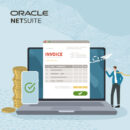
Assessing Talent in a Pandemic
As workforce dynamics change and more employees work remotely, how can businesses accurately gauge the performance of their staff?
Performance appraisals are stressful for both managers and employees even in the best of times. A research conducted by McKinsey in April 2019 reveals that the majority of CEOs do not find the performance management process helpful in identifying top performers and over half of individuals surveyed do not believe that the performance appraisal process accurately reflects their contributions.
However, uncomfortable conversations aside, humans like knowing how they are doing. Fewer touch points, such as getting rid of annual performance ratings, is not the answer.
With work from home or remote working becoming more widespread globally, it is becoming more challenging for management to accurately evaluate the performance of their staff. In many cases, pre-pandemic benchmarks may no longer apply.
According to McKinsey, “The current crisis has dramatically affected goals and performance plans, with the added wrinkle of making the people who are working remotely even more reliant on performance management to tell them how they are doing.”
Managers today must consider the impact of COVID-19 on an employee’s assessment. They must also strive to be empathetic to the challenging circumstances that some workers may find themselves in during this period.
Here are a few tips on how to better assess your company’s talent during these times.
Be compassionate
Many employees are operating under difficult conditions. They may not have a proper workspace at home or need to look after young children during office hours. As such, managers should be empathetic when appraising such employees and show more flexibility and compassion during the appraisal process.
It is also probably no longer relevant to appraise workers based entirely on KPIs that were set before the pandemic. Instead, managers should focus on each employee’s growth and development. Some behaviours that can be rewarded include empathy, resilience, and the ability to adapt, as well as teamwork and collaboration.
Do not focus solely on numbers

The usual method of giving employees ratings may also be difficult, as their performances may have been hampered by the pandemic. Rather, it might be more beneficial to adopt a system that does away with scores, and in its place provides a narrative of the employee’s performance that contains specific and helpful information about what they have done well, as well as areas for improvement.
Also, as managers may not be able to see their staff in person, they may need to look at other forms of data to perform their appraisals. This can include self-evaluations and getting inputs from an employee’s peers.
Engage regularly

Rather than having the traditional once a year goal-setting exercise, managers should strive to engage their employees on a regular basis, to set priorities together amid the fast-changing environment. Companies should also invest in strengthening the coaching skills of their managers to help them manage the performance of their staff more effectively, especially those that are working remotely.
Relooking approach for poor performers
Managers will need to take a softer approach when it comes to underperformers during this period. This may involve giving them more time to turn things around as they adjust to working from home. That said, at some point if the employee does not improve, the manager will then need to take the appropriate action to address the situation.
On the flip side, high-performing workers should be lauded more than usual. This will boost the morale of the organisation’s best employees and increase the chances of retaining them. Use the performance appraisal as an opportunity to recognise and show appreciation for these stars.



















